Dimplex BT 300 AN Handleiding
Dimplex
Temperatuurregelaar
BT 300 AN
Bekijk gratis de handleiding van Dimplex BT 300 AN (4 pagina’s), behorend tot de categorie Temperatuurregelaar. Deze gids werd als nuttig beoordeeld door 14 mensen en kreeg gemiddeld 4.6 sterren uit 7.5 reviews. Heb je een vraag over Dimplex BT 300 AN of wil je andere gebruikers van dit product iets vragen? Stel een vraag
Pagina 1/4

BT 300 AN
02/08/A 1 5 21 414 00 (EA08/011) FE
Elektronischer Fußboden-Temperaturregler mit Fernfühler
Electronic floor temperature controller with remote sensor
Thermorégulateur électronique avec télédetecteur pour la régulation
de températures dans des sols
Elektroniczna podłoga-regulator temperatury z czujnikiem zdalnym
Sicherheitshinweis!
3. Installation
D
Dieses Gerät darf nur durch eine Elektrofachkraft geöffnet und gemäß dem entsprechenden
Schaltbild im Gehäusedeckel / auf dem Gehäuse / in der Bedienungsanleitung installiert
werden. Dabei sind die bestehenden Sicherheitsvorschriften zu beachten. Achtung! Der
Betrieb in der Nähe von Geräten, welche nicht den EMV-Richtlinien entsprechen, kann zur
Beeinflussung der Gerätefunktionen führen. Nach der Installation ist der Betreiber, durch
die ausführende Installationsfirma, in die Funktion und Bedienung der Regelung einzuweisen.
Die Bedienungsanleitung muss für Bedien- und Wartungspersonal an frei zugänglicher
Stelle aufbewahrt werden.
Je nach Gerätetyp oder Verpackungsgröße, wird das Gerät entweder geschlossen oder der
schnelleren Montage wegen geöffnet ausgeliefert. Der Regler darf nicht auf leit-Achtung!
fähigem Untergrund installiert werden. Dies ist besonders bei metallhaltiger Tapete und
ähnlicher Wandverkleidung zu beachten. Nach Montage auf die Wand oder Unterputzdose
und elektrischem Anschluss, wird der Gehäusedeckel mit den unteren Haken eingehängt
und bis zum Einrasten nach oben zugeschwenkt. Der elektrische Anschluss erfolgt wie
unter Punkt 9. dargestellt. Der Fühler führt Netzspannungspotential und darf nur mit dem
Leitungstyp H05VV-F verlängert werden. Die nach EN 60730-1 vorgeschriebene doppelte
Isolierung muss auch an der Verbindungsstelle eingehalten werden. Es ist darauf zu achten,
dass die Fühlerleitung nicht parallel zu netzspannungsführenden Leitungen verlegt wird. Ist
die Parallelverlegung nicht zu vermeiden, muss eine geschirmte Leitung verwendet und der
Schirm auf die Klemme 6 gelegt werden. Um einen Austausch eines defekten Fühlers zu
gewährleisten, muss der Fühler inklusive Fühlerleitung reversibel in einem Leerrohr verbaut
werden. Zum Verschließen des Leerrohres im Estrich wird die Schutzhülse TFH 821
verwendet (vgl. Punkt 6. Zubehör). Um eine optimale Wärmeverteilung im Fußboden zu
erreichen, muss der Fühler mittig zwischen zwei Heizleitern positioniert werden. Bei Warm-
wasser-Beheizten Oberflächen sind stromlos geschlossene Ventile zu verwenden. Gege-
benenfalls benötigte Temperaturbegrenzungen müssen zusätzlich installiert werden.
1. Anwendung
Dieser elektronische Zweipunktregler wurde speziell zur Regelung elektrischer oder
Warmwasser-Heizungen/Zusatzheizungen für Fußböden und anderer Oberflächentempe-
riersysteme entwickelt. Für andere vom Hersteller nicht vorherzusehende Einsatzgebiete
sind die dort gültigen Sicherheitsvorschriften zu beachten. Eignung hierfür siehe Punkt 10.
Gewährleistung.
2. Funktionen
4. Technische Daten
5. Fühler
Versorgungs- und Schaltspannung: 230V, 50/60Hz
Kontakt: Schließer, 230V~ potentialbehaftet
Schaltvermögen: max.13(2)A bis 30°C Umgebungstemperatur
Zulässige Umgebungstemperatur: 0 … 30°C
Regelbereich: 10 … 42°C
Schaltdifferenz: ca.1K
Skala: Merkziffernskala
Leistungsaufnahme: ca.1W
Fühlertoleranz: ±1K
Anschlussquerschnitt: 0,5 … 1,5 mm2
Schutzklasse: II, nach entsprechender Montage
Schutzart: IP30, nach entsprechender Montage
Lagertemperatur: -20 … +70°C
zulässige Luftfeuchte: max. 95%rH, nicht kondensierend
Der Regler misst mit einem in den Fußboden eingebrachten Fühler die Temperatur und
regelt diese mit einer Schaltdifferenz von ca.1K. Aus dieser Regelung ergibt sich eine Ober-
flächentemperatur, die hauptsächlich durch den Aufbau des Fußbodens bestimmt wird. Bei
elektrischen Heizungen ist darauf zu achten, dass diese auch bei Dauerbetrieb den Ober-
flächenaufbau nicht überhitzen können. Achtung! Bei Oberflächen, ausgeführt als Sitzmö-
bel oder Stellfläche, ist darauf zu achten, dass die eingestellte Temperatur nicht zu einer
Gesundheitsgefährdung von Personen oder Entflammung von Gegenständen führen kann.
Zur Vermeidung einer zu hohen Temperatureinstellung, kann der Einstellbereich mecha-
nisch unter dem Einstellknopf eingeschränkt werden (vgl. Punkt 8).
Der BT 300 AN verfügt über einen EIN/AUS-Schalter mit dem die Regelung außer Betrieb
genommen werden kann. Die rote Lampe zeigt die aktive Heizung an. Bei Fühlerbruch,
Fühlerkurzschluss oder einer Fühlertemperatur unter -15°C (entspricht Fühlerbruch) wird
die Heizung ausgeschaltet.
Fühlerwerttabelle NTC 2k
Fühlertemperatur [°C] Widerstandswert [k ]액
0 5,642
10 3,657
15 2,973
20 2,431
25 2,000
30 1,654
40 1,151
50 0,816
60 0,590
Der Fühler ist im Lieferumfang enthalten. Bei Ersatz Fühlertyp F 3128 bestellen.
6. Zubehör
TFH 821 – Schutzhülse bei Estrichmontage des Fühlers, passend für Leerrohr 20 mmØ
7. Verwendete Symbole
Klemme Symbol Bedeutung
1Heizausgang
2 L Phase Versorgungsspannung
3, 4 N Neutralleiter Versorgungsspannung und Verbraucher
(intern gebrückt)
5, 6 Fühleranschluss
Schalter 0 Regelung Aus
Schalter I Regelung Ein
Gehäuse-Material/Farbe: ABS-Kunststoff, Reinweiß (ähnlich RAL 9010)
Ausstattung: Lampe rot für „Heizen“, Schalter „EIN/AUS“,
mechanische Bereichseinengung,
Doppel-PE-Klemme zur Weiterleitung des
Schutzleiters für Verbraucher der Schutzklasse I
Safety information GB
No persons other than expert electricians only must open this device in due compliance
with the wiring diagram shown in the housing cover / on the housing / represented in the
corresponding operating instructions.
Caution! The operation of the controller in the vicinity of other devices that do not comply
with the EMC directives may affect its functions. The company charged with the installation
of the device must, after the completion of the installation works, instruct the user of the
control system into its functions and in how to operate it correctly.
These operating instructions must be kept at a place that can be accessed freely by the
operating and/or servicing personnel in charge.
1. Application
This controller has been specially devised for the control of electrical, hot water and
additional floor heating systems, as well as for the control of other surface equalization
systems. Regarding other applications not to be foreseen by the manufacturer of this
device, the safety standards concerning these applications need to be followed and adhered
to. Regarding the aptitude of the device for any such other application, please refer to
section 10. herein (Warranty).

3. Installation
The device is, depending on the type version of the device or size of the package used for
it, either delivered in closed or, in order to facilitate its fast installation, also in opened con-
dition. Caution! The controller must not be installed on a conductive surface. This applies
in particular when metalliferous wallpapers or wall claddings of a similar nature have been
used. After its installation on the wall surface or on an UP box and after completion of its
electrical connection, the housing cover is hooked up using the hooks at the bottom and
then swivelled in upward direction until it snaps in. The electrical connection of the device
must be realised as illustrated in section 9 herein. The sensor carries line voltage potential
and may only be extended by means of an H05-VV-F compliant cable. The double insulation
required by EN 60730-1 needs to be observed at the connection point too. Care must be
taken to ensure that the
sensor line is not laid in parallel to line voltage carrying cables or
lines. Where parallel
laying cannot be avoided, a shielded line must be used and the shiel-
ding be connected to terminal 6. In order to ensure the easy replacement of a defective
sensor, the sensor including its line needs to be laid inside an empty conduit in a replaceable
manner. The protecting sleeve, type TFH 821, serves for the closing of the empty conduit
that has been concealed in the related surface structure (see section 6., Accessories). The
sensor must, in order to obtain an optimal distribution of the heat in the floor, be posi-
tioned centrically between two heating conductors. With warm-water heated surfaces,
normally closed valves are to be used. Possibly required temperature limiters need to be
installed in addition.
2. Functional description
4. Technical data
Supply- and switching voltage: 240V, 50/60Hz
Contact: make contact, 230V~, non-isolated
Switching capacity: max.13(2)A, up to an ambient temperature
of 30° C
Admissible ambient temperature: 0 … 30°C
Control range: 10 … 42° C
Switching difference: approx.1K
Scale: note numeral scale
Power consumption: approx.1W
Sensor tolerance: ±1K
Terminal capacity (wire cross section): 0.5 … 1.5 mm 2
Protection class: II (after according installation)
Degree of protection: IP30 (after according installation)
Storage temperature: -20 … +70°C
Admissible air moisture: max. 95% r.h., non-condensing
Housing material and colour: plastic (ABS), pure white
(similar to RAL 9010)
Equipment: red lamp for “heating”, ON/OFF switch,
mechanical range suppression, double PE
terminal for the forward connection of the
protective earthing conductor to protection
class I compliant consumers
The controller measures, based on the data delivered to it by a special sensor that is instal-
led in an empty tube that has been concealed in the floor, the existing temperature with a
switching difference of approx.1K. The control operations of the device result in a surface
temperature that is mainly determined by the structure and composition of the related floor.
With electric heating systems care must be taken to ensure that the performance of the
controlled system, even if the system is operated continuously, do not result in an overhea-
ting of the related surface structure. With surface structures that are designed asCaution!
sitting furniture or that provide special storing surfaces, care must be taken to ensure that
the actually adjusted temperature can neither cause nor lead to health hazards or induce
the inflammation of objects. To delimit the admissible temperature range, the setting range
can be restricted mechanically by means of a special facility that exists underneath of the
adjusting knob (see section 8).
The BT 300 AN is equipped with an ON/OFF switch that enables to activate or deactivate its
control operations. The red lamp that has been provided for this purpose indicates the
active state of the heating system. The heating system is deactivated in the event of a
sensor breakdown or sensor short-circuit and also in the event the sensor measures a
temperature below -15°C (which is equivalent to a sensor breakdown).
5. Sensors
List of sensor values NTC 2k
Sensor temperature [°C] Resistance value [k ]액
0 5.642
10 3.657
15 2.973
20 2.431
25 2.000
30 1.654
40 1.151
50 0.816
60 0.590
The sensor is not included in the scope of the delivery. For replacement, please order
sensor type F 3128.
6. Accessories
Protecting sleeve type TFH 821 for installation of the sensor in the floor pavement,
suited for an 20 mm empty conduit.Ø
7. Explanation of symbols
Terminal Symbol Explanation
1Heating output
2 L Supply voltage phase
3, 4 N Neutral conductor (supply voltage and consumer),
bridged internally
5, 6 Sensor connection
Switch 0 Control OFF
Switch I Control ON
2
Consigne de sécurité fondamentale F
Uniquement des personnes qualifiées en matière d’électricité doivent ouvrir ce dispositif en
conformité avec le schéma des connexions représenté dans le couvercle du boîtier / apposé
sur le boîtier / représenté dans les notices d’instructions correspondantes.
Attention! L’opération du régulateur dans les environs d’autres dispositifs ne conformant
pas aux directives CEM peut affecter son bon fonctionnement. La société chargée de
l’installation du dispositif doit, après l’achèvement des travaux, initier l’utilisateur aux fonc-
tions du régulateur et à son opération correcte. Gardez cette notice d’instructions à un lieu
librement accessible pour les opérateurs et hommes de service.
1. Application
Ce régulateur a été spécialement conçu pour le contrôle de systèmes de chauffage électri-
ques, de systèmes de chauffage à eau chaude et de systèmes de chauffage par le sol et
d’autres systèmes d’équilibrage de températures superficielles. Concernant des autres
applications pas à prévoir par le fabricant de ce dispositif, les standards de sécurité se
rapportant à ces applications sont à respecter. En ce qui concerne l’aptitude ou l’approba-
tion du dispositif pour des telles applications, veuillez également faire attention aux infor-
mations de garantie dans chapitre10. (Garantie) dans cette notice d’instructions.
2. Fonctionnement
Le régulateur mesure, sur la base des données délivrées par un détecteur spécial qui a été
installé dans un conduit vide encastré dans le plancher, la température existante et contrôle
les opérations du système correspondant avec un différentiel d’env.1K.
Les opérations de
contrôle ainsi exécutées aboutissent à une température superficielle
qui est premièrement
déterminée par la structure et la composition du plancher ou sol correspondant. Avec de
systèmes de chauffage électrique il faut veiller à assurer à ce que la puissance du système
contrôlé ne puisse, même si le système est opéré en marche continue, résulter dans une
surchauffe de la structure superficielle corres-pondante. Attention! Avec des surfaces
chauffées crées et prévues pour l’utilisation en tant que siège ou permettant l’utilisation
pour l’entreposage, il faut toujours faire attention à assurer à ce que la température effec-
tivement ajustée ne puisse causer ou aboutir à des risques pour la santé ou ne puisse
induire l’inflammation des objets. L’étendue de réglage du dispositif peut, afin de prévenir
l’ajustage de températures trop élevées, être resserrée mécaniquement par moyen d’un
mécanisme spécial qui existe en dessous du bouton de réglage (voir chapitre 8). Le BT 300
AN est muni d’un interrupteur MARCHE / ARRET pour l’activation ou désactivation des
opérations de réglage. La lampe-témoin rouge prévue à cet effet sert pour l’indication de
l’état actif du système de chauffage. Le système de chauffage sera désactivé en cas d’une
défaillance ou court-circuit du détecteur. Ceci vaut aussi dans le cas où une température en
dessous de -15° C serait mesurée (ce qui correspond à une rupture ou défaillance du détec-
teur).
3. Installation
Le dispositif est, selon son type ou la taille du paquet utilisé pour son emballage, livré soit en
condition fermée ou, pour faciliter son installation rapide, en condition ouverte. Attention! Le
régulateur ne doit pas être installé sur une surface conductrice. Ceci s’applique en particulier
en cas de l’utilisation de tapisseries métallisées ou d’autres revêtements muraux d’une nature
similaire. Après son installation sur un mur ou sur une boîte encastrée et après son raccorde-
ment électrique, d’abord accrocher le couvercle du boîtier par moyen des crochets inférieurs
et ensuite le plier vers le haut jusqu’à ce qu’il s’enclenche. Le raccordement électrique du dis-
positif est à réaliser comme illustré dans chapitre 9 dans cette notice d’instructions. Le détec-
teur est sous tension de réseau et ne doit être rallongé que par moyen d’un câble du type
H05VV-F. L’isolation double requise par le standard EN 60730-1 est également à observer au
point de jonction. Il faut toujours faire attention à ne pas poser la ligne de détecteur en
parallèle aux câbles sous courant de secteur. Lorsqu’une mise en parallèle n’est à éviter, l’utili-
sation d’un câble blindé est requise dont le blindage doit être raccordé à la borne 6. Afin
d’assurer le remplacement facile d’un détecteur défectueux, le détecteur avec sa ligne, doit,
d’une manière remplaçable, être posé à l’intérieur d’un conduit vide. Le manchon protecteur
type
TFH 821
sert pour la fermeture du conduit vide encastré dans le plancher en plâtre ou en
ciment (voir chapitre 6., Accessoires). Le détecteur doit, afin d’obtenir une distribution opti-
male de la chaleur dans le plancher, être positionné de manière centrée entre deux conduc-
teurs de chauffage. Avec des surfaces chauffées par des systèmes de chauffage à eau chaude,
des soupapes normalement fermées sont à utiliser. Lorsqu’il serait nécessaire, des limiteurs
de température sont à installer en plus.
4. Caractéristiques techniques
Tension d’alimentation et de
commutation: 240V, 50/60Hz
Contact: contact de fermeture, 230V~, non isolé
Puissance de coupure:
max.13(2)A, jusqu’à une température ambiante de 30°C
Température ambiante admissible:
0 … 30°C
Plage de réglage: 10 … 42°C

5. Détecteur
Table des valeurs détecteurs NTC 2k
Température du détecteur [°C] Valeur ohmique [k ]액
0 5,642
10 3,657
15 2,973
20 2,431
25 2,000
30 1,654
40 1,151
50 0,816
60 0,590
Le détecteur n’est pas inclus dans l’étendue de la livraison. Pour son remplacement,
veuillez passer votre commande pour un détecteur du type F 3128.
5. Czujnik
Tabela wartości czujnika
NTC 2k
Temperatura czujnika
[°C]
Wartość oporu
[k액]
0 5,642
10 3,657
15 2,973
20 2,431
25 2,000
30 1,654
40 1,151
50 0,816
60 0,590
Czujnik jest zawarty w zakresie dostawy. Przy zapasie typ czujnika F 3128 zamówić.
6. Accessoires
Manchon protecteur type TFH 821 pour l’installation du détecteur dans le plancher en plâtre
ou en ciment, convenable pour l’utilisation avec un conduit vide d’un diamètre de 20 mm.
7. Symboles / explication
Borne: Symbole Explication
1Sortie de chauffage
2 L Phase (tension d’alimentation)
3, 4 N Conducteur neutre (tension d’alimentation et
consommateur), shunté à l’intérieur
5, 6 Raccordement du détecteur
Interrupteur 0 Régulation ARRET
Interrupteur I Régulation MARCHE
3
Différentiel: env.1K
Echelle: échelle à chiffres de repère
Puissance absorbée: env.1W
Tolérance du détecteur: ±1K
Section de raccord: 0,5 … 1,5 mm2
Indice de protection: II (après installation correspondante)
Type de protection: IP30 (après installation correspondante)
Température de stockage: -20 … +70°C
Humidité de l’air admissible: 95%, non condensant
Matériau du boîtier et couleur: plastique (ABS), blanc pur (pareil à RAL 9010)
Equipement: lampe-témoin rouge pour l’indication du mode
de service «chauffage»; interrupteur MARCHE /
ARRET; resserrage de domaine mécanique, borne
PE double pour l’acheminement du conducteur de
protection (terre) vers des consommateurs
conformant à l’indice de protection I
Wskazówka bezpieczeństwa !
3. Instalacja
PL
Ten przyrząd może być otwarty tylko przez wykwalifikowanego elektryka i może zostać zainstalo-
wany, według odpowiedniego planu połączeń znajdującego sie˛ w instrukcji obsługi, która jest
umieszczona w pokrywie obudowy. Przy tym należy zwracać uwage˛ na przepisy bezpieczeństwa.
Uwaga! Praca w pobliżu przyrządów, które nie odpowiadają wytycznym OEZ-(odporność na elek-
tromagnetyczne zakłócenia), mogą mieć wpływ na funkcje przyrządu. Firma która przeprowadziła
instalacje˛ poinstruowała użytkownika jak należy używać funkcje i obsługiwać regulator. Instrukcja
obsługi musi być przechowywana dla personelu obsługującego i konserwującego w swobodnie
doste˛pnym miejscu.
Zależnie od typu przyrządu albo wielkości opakowania, zostanie przyrząd albo zamknięty albo ze
wzgle˛ du na szybki montaż otwarcie dostarczony. Regulator nie może być instalowany naUwaga !
przewodzącym podłożu. Na to należy szczególnie zwracać uwage˛ przy tapecie zawierającej metal i
podobnej okładzinie ściany. Po motażu na ścianie albo puszce podtynkowej i elektrycznym
przyłączu, zostanie pokrywa obudowy zawieszona z dolnym zaczepieniem i aż do zatrzasku w góre˛
obrócona. Elektryczne przyłączenie naste˛ puje jak pod punktem 9. przedstawiono. Czujnik prowadzi
potencjał napie˛ cia sieci i może być przedłużony tylko typem przewodu H05W-F. Według EN 60730-1
przepisowa podwójna izolacja musi być dotrzymana też na połączeniu. Należy zwracać uwage˛ aby
przewód czujnika nie został położony równolegle do prowadzących napie˛ cie zasilania przewodów.
Jeżeli nie można uniknąć równoległego położenia, muszą zostać użyte ekranowane przewody a
ekran musi być położony na zacisk 6. Aby zagwarantować wymiane˛ uszkodzonego czujnika, musi
czujnik włącznie z przewodem czujnika zostać odwracalnie zabudowany w pustej rurze. Do zamknie˛cia
pustej rury w jastrychu zostanie użyta tulejka ochronna TFH 821 (porów. punkt 6. osprze˛t). Aby
osiągnąć optymalne rozłożenie ciepła w podłodze, musi czujnik zostać ustawiony współosiowo mie˛
dzy dwoma przewodami ogrzewczymi. Przy ciepłą wodą ogrzewanych nawierzchniach, muszą być
użyte bezprądowe zamknie˛ te zawory. W danym wypadku, muszą być dodatkowo zainstalowane,
potrzebne ograniczenia temperatury.
1. Zastosowanie
Ten elektroniczny dwupunktowy regulator został specjalnie skonstruowany do regulowania elek-
trycznych albo ogrzewania/dodatkowego ogrzewania ciepłej wody i innych systemów łagodzenia
nawierzchni. Dla innych zastosowań, które nie może przewidzieć wytwórca, należy przestrzegać tam
obowiązujące przepisy bezpieczeństwa. Przydatność na to patrz punkt 10. Gwarancja.
2. Funkcje
4. Techniczne dane
Zaopatrzeniowe- i łączeniowe napie˛cie 230 V, 50/60 Hz
Kontakt: normalnie otwarty, 230 V~, obciążony potencjałem
Zdolność łączenia: max.13(2)A, do 30˚C temperatura otoczenia
Dopuszczalna temperatura otoczenia: 0 35˚C…
Zakres regulacji: 10 … 42˚C
Różnica przełączania: ca. 1K
Skala: Skala zapamie˛ tywania liczb
Pobór mocy: ca. 1W
Tolerancja czujnika: 1K
Przekrój przyłącza: 0,5 … 2,5 mm2
Klasa ochrony: II (po odpowiednim montażu)
Regulator mierzy temperature˛ z umieszczonym w podłodze czujnikiem i reguluje ją z różnicową
przełączania ca. 1K. Z tej regulacji wynika temperatura powierzchni, która jest głównie określona
przez strukture˛ podłogi. Przy elektrycznych ogrzewaniach należy zwracać uwage˛ na to, aby one nie
zostały przegrzane też przy nieprzerwanej pracy nawierzchni.
Uwaga ! Przy nawierzchniach, wykonanych do ustawiania mebli do siedzienia albo powierzchni do
postawiania, należy uważać na to, aby nastawiona temperatura nie prowadziła do zagrożenia dla
zdrowia osób albo do zapalenia przedmiotów. W celu uniknie˛ cia nastawienia za wysokiej tempera-
tury, może zakres nastawiania, pod gałką do nastawiania, zostać mechanicznie ograniczony (porów.
punkt 8). BT 300 AN dysponuje WŁĄ./WYŁ.-przełącznikiem przy pomocy którego regulator może
zostać wycofany z ruchu. Czerwona lampka pokazuje aktywne ogrzewanie. Przy uszkodzeniu czuj-
nika, zwarciu czujnika albo temperaturze czujnika poniżej -15˚C (odpowiada uszkodzeniu czujnika)
ogrzewanie zostanie wyłączone.
6. Osprze˛t
TFH 821 Đ Tulejka ochronna przy montażu jestrychu czujnika, pasująca do pustej rury Ø 20 mm
7. Stosowane symbole
Zacisk Symbol Znaczenie
1
Wyjście ogrzewania
2 L
Faza napie˛cia zasilania
3, 4 N
Przewód zerowy napie˛cie zasilania i użytkownik
(wewne˛trznie zmostkowany)
5, 6
Przyłącze czujnika
Przełącznik
0
Regulacja Wyłą.
Przełącznik
I
Regulacja Włą.
Rodzaj ochrony: IP30 (po odpowiednim montażu)
Temperatura składowania: -20 +70˚C…
dopuszczalna wilgotność powietrza: max. 95% r.H., nie kondensująca
Obudowa-materiał / kolor ABS-plastyk, czysto biały (podobny RAL 9010)
Wyposażenie: Lampka czerwona „Ogrzewanie“, przełącznik
„WŁĄ./WYŁ.“, mechaniczne zwe˛żenie zakresu,
podwójny-PE-zacisk do dalszego przekazania przewodu
zabezpieczającego dla użytkowników klasy
zabezpieczenia I
Product specificaties
| Merk: | Dimplex |
| Categorie: | Temperatuurregelaar |
| Model: | BT 300 AN |
Heb je hulp nodig?
Als je hulp nodig hebt met Dimplex BT 300 AN stel dan hieronder een vraag en andere gebruikers zullen je antwoorden
Handleiding Temperatuurregelaar Dimplex

8 Mei 2023

7 Mei 2023

29 April 2023

25 April 2023

16 April 2023

5 April 2023

26 Maart 2023

14 Februari 2023

3 Februari 2023

11 Januari 2023
Handleiding Temperatuurregelaar
Nieuwste handleidingen voor Temperatuurregelaar
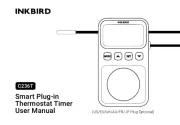
7 Juli 2025
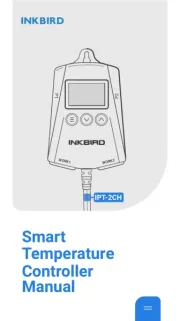
7 Juli 2025
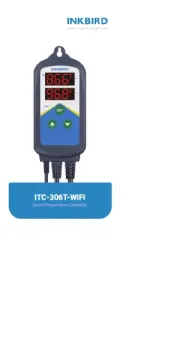
7 Juli 2025

8 Mei 2025
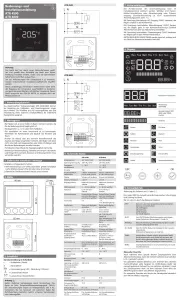
25 Maart 2025
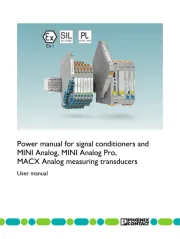
29 Januari 2025

5 December 2024

5 December 2024
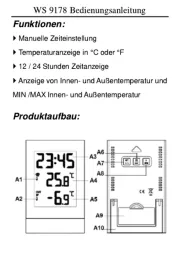
3 December 2024
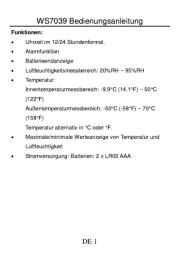
3 December 2024